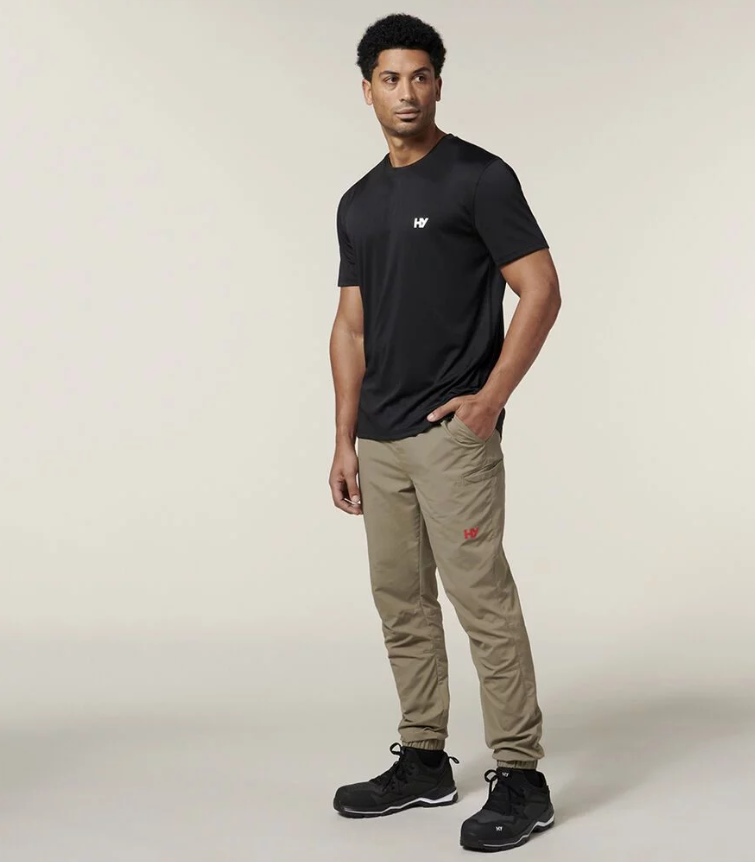High-visibility workwear, commonly known as hi-vis clothing, plays a pivotal role in ensuring safety and reducing accidents in hazardous environments. From construction sites to roadwork, warehouses, and beyond, these garments are designed with bright colors and reflective materials to enhance visibility, making workers easily discernible in low-light conditions or areas with high traffic. The significance of high-visibility workwear cannot be overstated, as it serves as a crucial safeguard for individuals working in potentially dangerous settings.
Enhancing Visibility and Safety
In hazardous environments, visibility is paramount to prevent accidents and ensure the well-being of workers. High-visibility clothing is typically crafted with fluorescent materials in bright colors like yellow, orange, or lime green. These colors have high visibility during daylight hours, allowing workers to stand out against their surroundings. Moreover, the inclusion of reflective strips or tapes on the clothing makes individuals conspicuous in low-light situations, such as during the night or in areas with poor visibility.
Reducing Accidents and Injuries
The primary goal of high-visibility workwear is accident prevention. In industries like construction, transportation, or mining, where heavy machinery or vehicles are operated, workers wearing hi-vis clothing become instantly recognizable to equipment operators and drivers. This visibility minimizes the likelihood of accidents caused by not seeing or identifying workers in time.
The reflective elements in hi-vis clothing are particularly effective in alerting drivers to the presence of workers, thereby reducing the risk of collisions. Additionally, in settings where multiple teams or contractors work in close proximity, hi-vis clothing helps distinguish between different groups, minimizing confusion and the potential for accidents.
Compliance with Safety Standards
Several countries have established stringent safety regulations mandating the use of high-visibility workwear in specific industries or working conditions. These regulations are put in place to ensure the safety of workers and to mitigate the risks associated with low visibility.
For instance, organizations such as the Occupational Safety and Health Administration (OSHA) in the United States and similar regulatory bodies worldwide stipulate guidelines regarding the types and requirements of hi-vis clothing to be worn in various workplaces. Compliance with these standards not only ensures the safety of workers but also protects employers from potential legal liabilities.
Adaptability and Innovation
Advancements in textile technology have led to the development of hi-vis clothing that offers enhanced comfort, durability, and functionality without compromising safety standards. Manufacturers continuously innovate by incorporating breathable fabrics, moisture-wicking properties, and ergonomic designs into high-visibility workwear, providing workers with comfortable attire suitable for extended periods of wear in challenging environments.
Additionally, some hi-vis garments now integrate features like tear-away designs for quick removal in case of emergencies, added insulation for cold weather conditions, and flame-resistant materials for industries prone to fire hazards.
Cultivating a Safety Culture
Beyond meeting regulatory requirements, the use of high-visibility workwear fosters a culture of safety within organizations. When employers prioritize and provide appropriate safety gear like hi-vis clothing, they demonstrate a commitment to their employees’ well-being. This proactive approach not only protects workers but also instills a sense of responsibility among them to adhere to safety protocols and use the provided safety equipment correctly.
Durability and Longevity
High-visibility workwear isn’t just about visibility; it’s also about endurance and longevity. These garments are engineered to withstand rugged conditions and repeated use. The fabrics used in hi-vis clothing are often selected for their resilience against wear and tear, ensuring that the clothing retains its reflective properties and bright colors even after prolonged exposure to harsh environments. Reinforced stitching and durable materials contribute to the extended lifespan of these garments, making them a reliable investment for both employers and workers.
Specialized Functionality
One of the remarkable aspects of modern high-visibility workwear is its versatility. Manufacturers have innovated to include specialized functionalities tailored to specific job requirements. For instance, certain hi-vis apparel comes equipped with pockets designed to hold specific tools or devices essential for the job. Moreover, some garments incorporate features like adjustable closures or ventilation systems, allowing workers to adapt to varying work conditions while maintaining safety and comfort.
Education and Training Initiatives
Ensuring the effectiveness of high-visibility workwear also involves educating workers about its importance and proper usage. Employers are increasingly implementing comprehensive training programs that emphasize the significance of wearing hi-vis clothing consistently. These initiatives cover aspects such as when and where to wear hi-vis gear, proper care and maintenance of the clothing, and the critical role it plays in personal safety. By promoting awareness and understanding, organizations empower their workforce to actively participate in creating a safer work environment.
Inclusivity and Accessibility
Recognizing the diverse workforce in various industries, efforts are being made to create inclusive high-visibility workwear options. Manufacturers are developing sizes and designs that cater to a wide range of body types and genders, ensuring that every worker has access to comfortable and effective hi-vis clothing. Additionally, advancements in design and manufacturing techniques have led to more lightweight and flexible options, making these garments more accessible and accommodating for all workers.
Environmental Considerations
In recent years, there has been a growing focus on sustainability in the production of workwear, including high-visibility clothing. Manufacturers are exploring eco-friendly materials and production processes to minimize the environmental impact of these garments. From using recycled materials to employing sustainable manufacturing practices, the industry is moving towards creating hi-vis workwear that not only prioritizes safety but also aligns with environmental conservation efforts
Conclusion
High-visibility workwear is an indispensable aspect of workplace safety in hazardous environments. Its role in enhancing visibility, reducing accidents, ensuring compliance with safety standards, fostering innovation, and cultivating a safety-conscious culture cannot be overlooked. Employers must prioritize the provision of high-quality hi-vis clothing and ensure that workers understand the importance of wearing it consistently to mitigate risks and safeguard lives in hazardous work settings.


